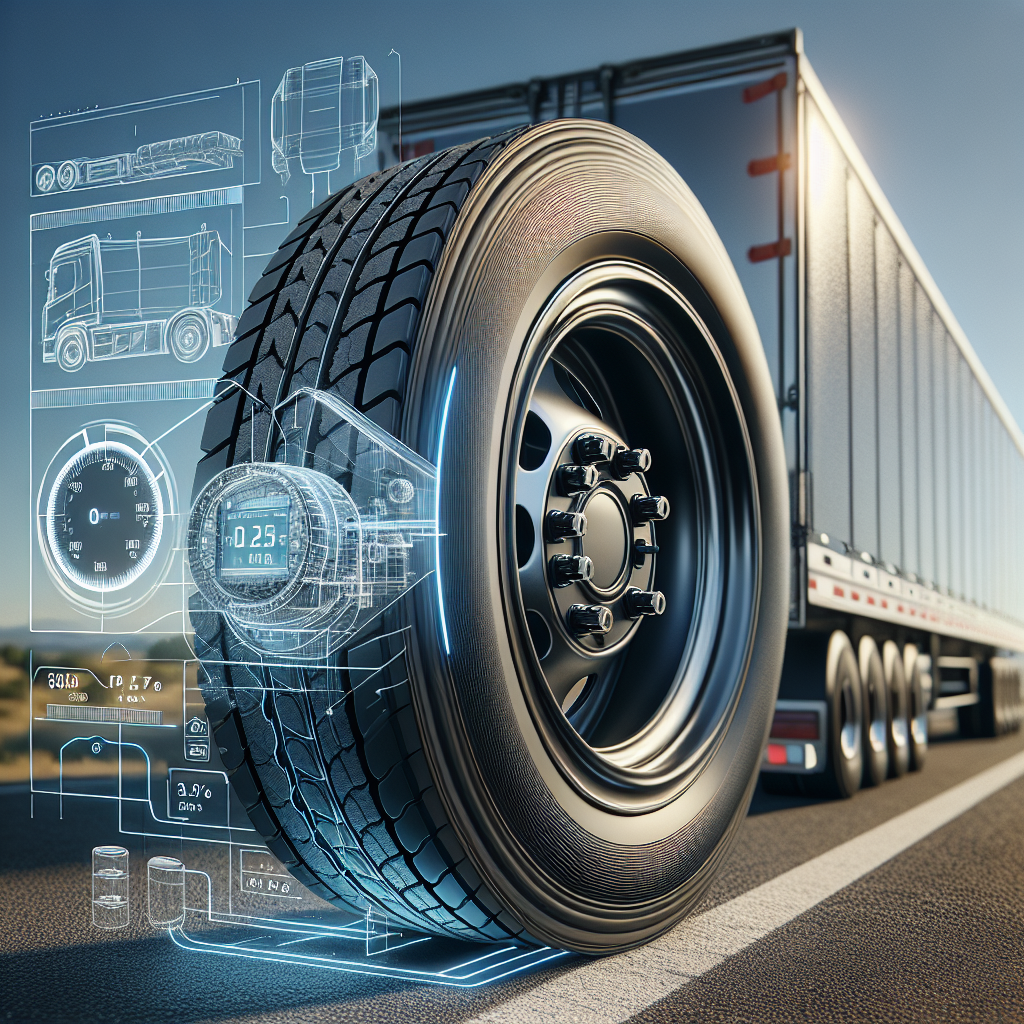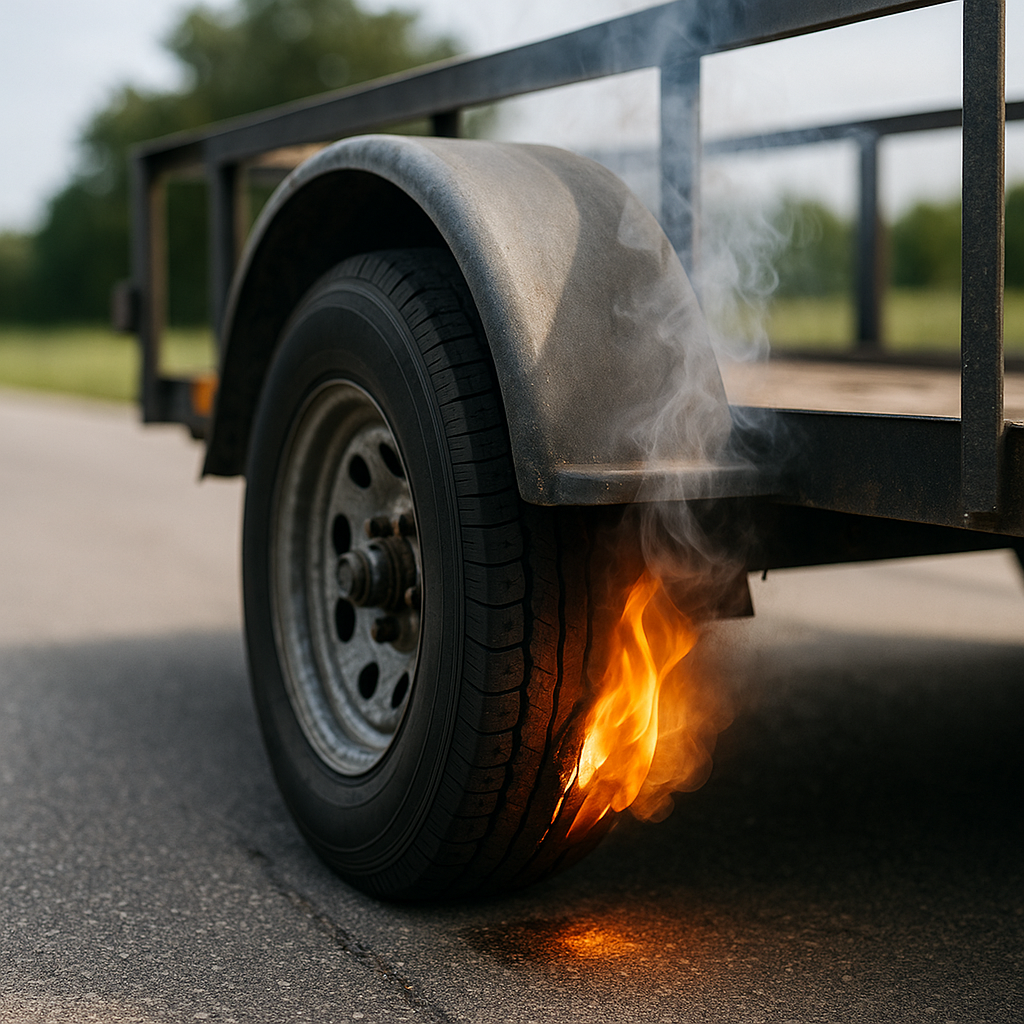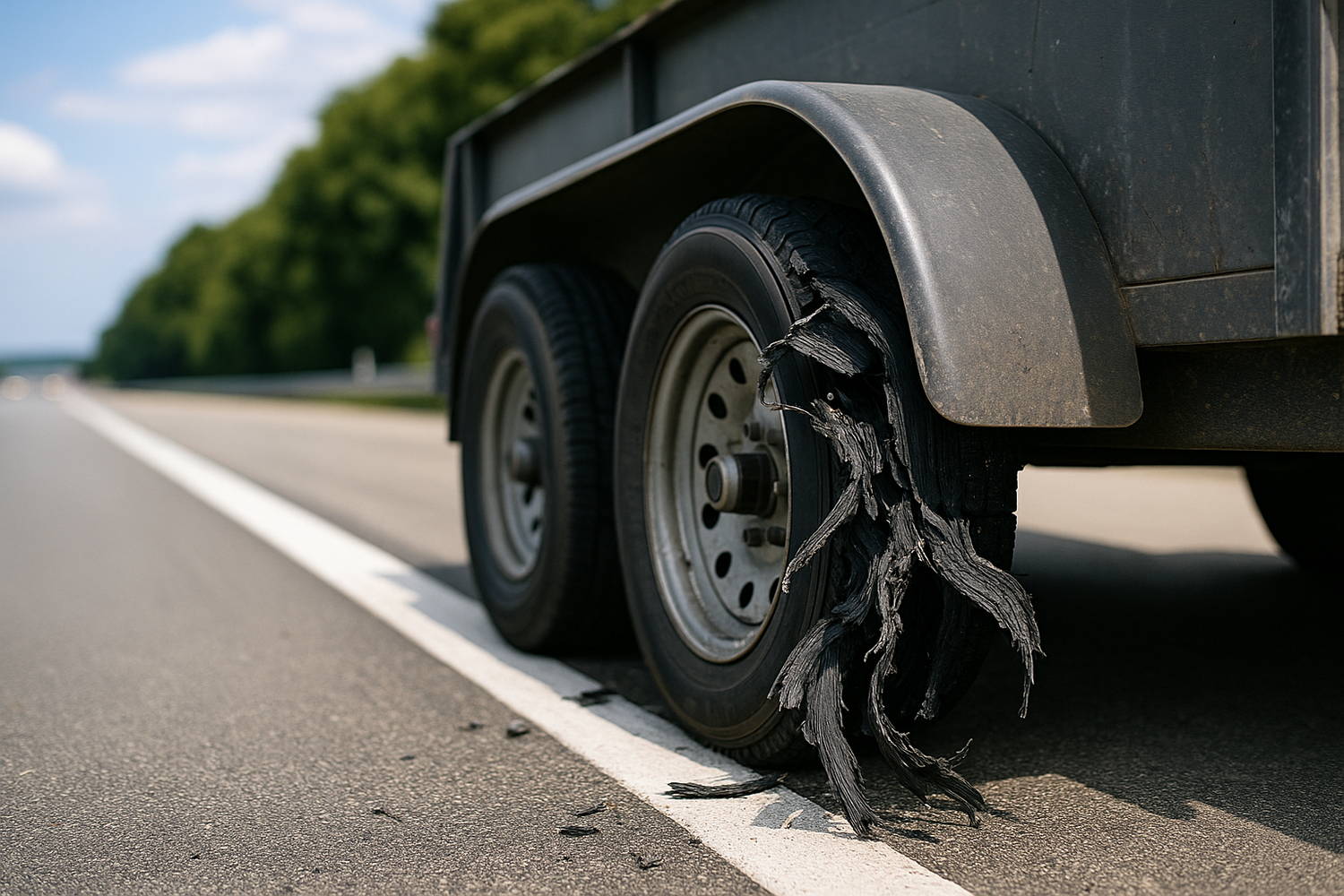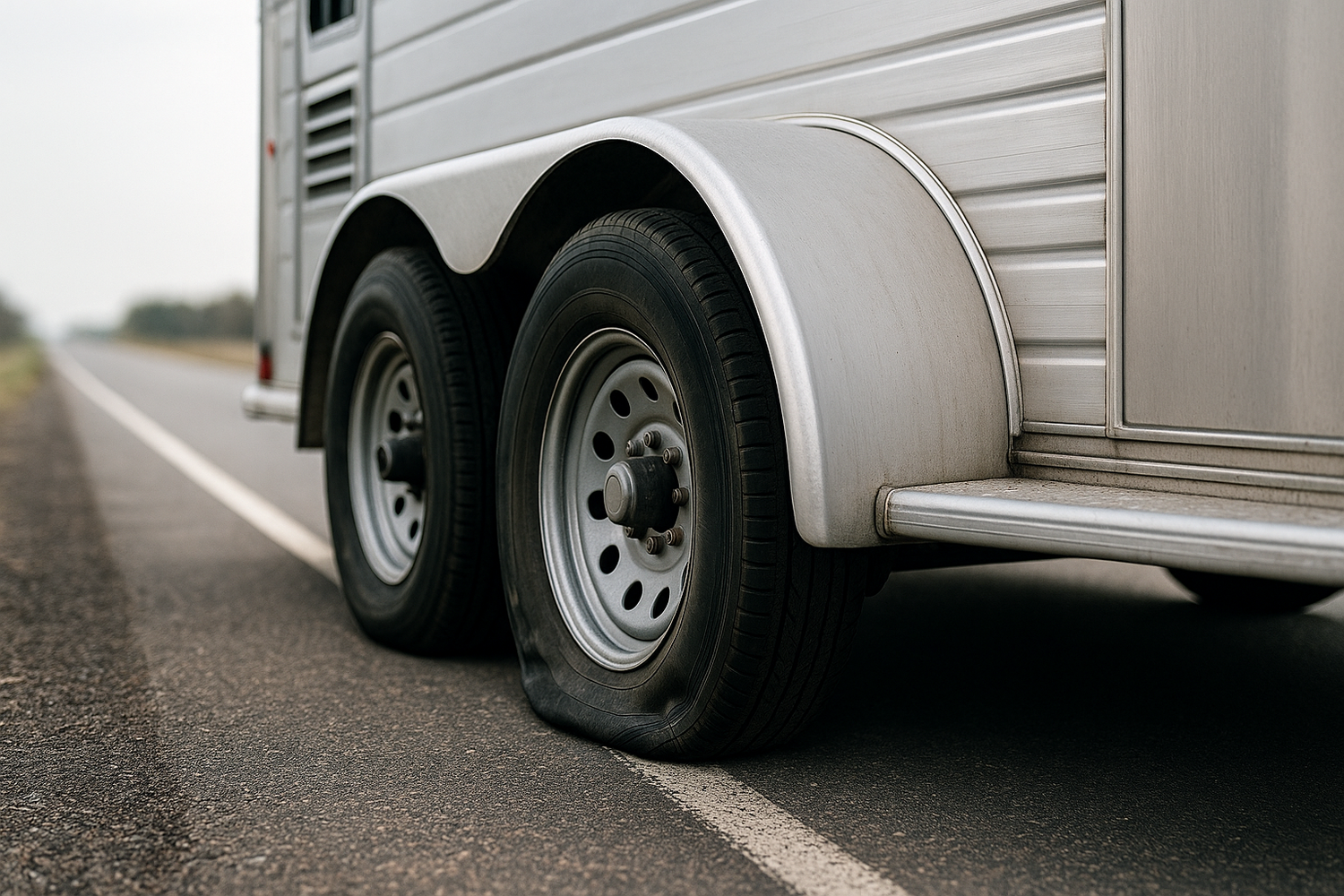Maintaining optimal tire health is crucial for anyone who relies on trailers for transportation. A trailer tire pressure and temperature monitoring system plays a vital role in ensuring that your trailer remains safe and efficient on the road. Regular monitoring can prevent significant issues, such as blowouts or uneven tire wear, which can lead to costly repairs and downtime.
Tires are the only contact point between your trailer and the road, making their condition paramount. When tire pressure is not maintained within the recommended range, it can lead to:
- Increased fuel consumption: Under-inflated tires create more rolling resistance, causing your vehicle to consume more fuel.
- Decreased handling and stability: Proper tire pressure ensures better grip and handling, enhancing safety during transport.
- Premature tire wear: Tires that are not properly inflated wear unevenly, leading to a need for earlier replacements.
Moreover, monitoring tire temperature is equally important. Elevated temperatures can indicate potential issues such as overloading or under-inflation. By using a trailer tire pressure and temperature monitoring system, you can receive real-time alerts about any anomalies, allowing you to take preventative action before a minor issue escalates into a catastrophic failure.
With the right system in place, you can tow with peace of mind, knowing that trailerwatchdog is standing guard.
How Trailer Tire Pressure Affects Performance and Safety
The performance and safety of your trailer greatly depend on the **tire pressure**. Properly inflated tires ensure optimal contact with the road, which is essential for maintaining control and stability. When tire pressure is within the recommended range, you can expect:
- Enhanced Traction: Adequate tire pressure improves the grip of the tires on the road surface, especially during adverse weather conditions. This traction is crucial for effective braking and handling.
- Improved Fuel Efficiency: Proper inflation reduces rolling resistance, allowing your vehicle to operate more efficiently. This translates to better fuel economy, saving you money in the long run.
- Extended Tire Life: Tires that are maintained at the correct pressure wear evenly, reducing the likelihood of premature tire replacements. This not only saves costs but also contributes to environmental sustainability.
On the other hand, under-inflated or over-inflated tires can lead to severe performance issues. Under-inflation can cause tires to overheat, increasing the risk of blowouts, while over-inflation can result in reduced contact with the road and a harsher ride.
Regularly checking and maintaining your trailer's tire pressure is essential for ensuring safety and performance. By integrating a trailer tire pressure and temperature monitoring system, you can easily keep track of tire conditions and address any issues before they escalate.
Benefits of Temperature Monitoring for Trailer Tires

Monitoring the **temperature of trailer tires** is equally as critical as keeping an eye on tire pressure. Elevated tire temperatures can indicate underlying issues, such as overloading or insufficient inflation, and can lead to dangerous situations on the road. Here are some key benefits of implementing a temperature monitoring system for your trailer tires:
- Early Detection of Problems: A temperature monitoring system provides real-time data, allowing you to identify abnormal tire temperatures before they escalate into serious issues, such as blowouts or tread separation.
- Enhanced Safety: By keeping tire temperatures in check, you can reduce the chances of tire failure, which can pose significant risks to both the driver and other road users. Safe tires contribute to overall road safety.
- Improved Performance: Tires that operate within their optimal temperature range perform better. This leads to enhanced traction, better handling, and a smoother ride, which is especially important during long hauls.
- Cost Efficiency: Preventing tire-related failures means saving money on emergency repairs and potential accidents. Additionally, tires that are well-monitored tend to last longer, reducing replacement costs.
Incorporating a **temperature monitoring system** into your trailer setup enables proactive maintenance. By understanding the thermal condition of your tires, you can make informed decisions that improve both safety and operational efficiency.
Choosing the Right Tire Pressure Monitoring System

Selecting the appropriate **tire pressure monitoring system (TPMS)** for your trailer can significantly influence safety and performance. With various options available, it’s essential to consider several factors to ensure you choose a system that meets your needs:
- Compatibility: Ensure that the TPMS you select is compatible with your trailer type and tire specifications. Systems designed for specific trailers often provide more accurate readings and better integration.
- Real-Time Monitoring: Opt for a system that provides real-time data on tire pressure and temperature. This feature allows for immediate alerts, enabling you to address issues before they escalate into serious problems.
- Ease of Installation: Look for a monitoring system that is easy to install and does not require extensive modifications to your trailer. Wireless systems are often preferred for their straightforward setup.
- Durability and Weather Resistance: The TPMS should be built to withstand harsh environmental conditions. Look for units that are weatherproof and designed to endure the rigors of road travel.
- Alert System: Choose a system that offers customizable alerts for both low tire pressure and high temperatures. This ensures that you receive notifications tailored to your specific safety requirements.
By carefully considering these factors, you can select a **tire pressure monitoring system** that enhances your trailer's safety and performance, ultimately giving you the confidence you need while on the road.
Installation Guide for Tire and Temperature Monitoring Systems

Installing a **tire and temperature monitoring system** in your trailer is a straightforward process that enhances safety and performance. Below is a step-by-step guide to ensure a successful installation:
- Gather Your Tools: Before you begin, collect the necessary tools, which may include a wrench, screwdriver, and any components provided with your monitoring system.
- Read the Manual: Start by thoroughly reading the installation manual included with your TPMS. Each system may have unique features and requirements.
- Prepare the Sensors: If your system includes external sensors, attach them to the valve stems of your trailer tires. Ensure they are secure and that the seals are tight to prevent air leaks.
- Install the Display Unit: Find a suitable location in your vehicle to mount the display unit. It should be easily visible while driving but not obstructive. Use the provided adhesive or brackets for installation.
- Connect Power Supply: If your system requires a power connection, follow the manufacturer’s instructions for wiring it into your vehicle’s electrical system. Some systems may operate on batteries, allowing for more flexible placement.
- Calibrate the System: Once everything is installed, turn on the monitoring system and follow the calibration process as outlined in the manual. This step is crucial for ensuring accurate readings.
- Test the System: After installation, conduct a test to confirm that the sensors are transmitting data correctly to the display unit. Check for alerts and ensure that pressure and temperature readings are accurate.
By following this installation guide, you'll be well on your way to enhancing the safety of your trailer with a reliable **tire and temperature monitoring system**. This proactive approach will help you catch potential issues before they lead to failures on the road.
Maintaining Your Trailer's Monitoring Systems Effectively

To ensure the longevity and reliability of your **trailer’s monitoring systems**, regular maintenance is essential. Here are some effective maintenance tips to keep your system functioning optimally:
- Regularly Check Sensor Functionality: Periodically inspect the sensors for any signs of damage or wear. Ensure they are securely attached and free from dirt or debris that might interfere with readings.
- Monitor Battery Levels: If your system operates on batteries, check the battery levels frequently. Replace batteries as needed to avoid unexpected failures.
- Update Software: Many modern monitoring systems offer firmware updates. Regularly check for updates from the manufacturer and install them to benefit from improved features and enhanced security.
- Calibrate Periodically: It’s essential to recalibrate your monitoring system at regular intervals or after making any significant adjustments to your trailer. This ensures that the system continues to provide accurate tire pressure and temperature readings.
- Inspect Wiring and Connections: For systems that require electrical connections, inspect all wiring for frays or damage. Ensure connections are tight and free from corrosion.
- Keep an Eye on Alerts: Pay attention to any alerts or notifications from your monitoring system. Address any issues immediately to prevent potential failures.
By maintaining your trailer's monitoring systems effectively, you can maximize safety and performance on the road. Regular checks not only enhance the reliability of your equipment but also give you peace of mind during your travels. Tow with peace of mind, knowing that trailerwatchdog is standing guard.








